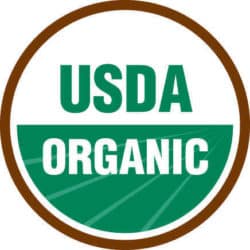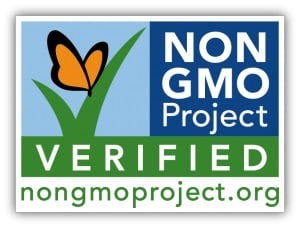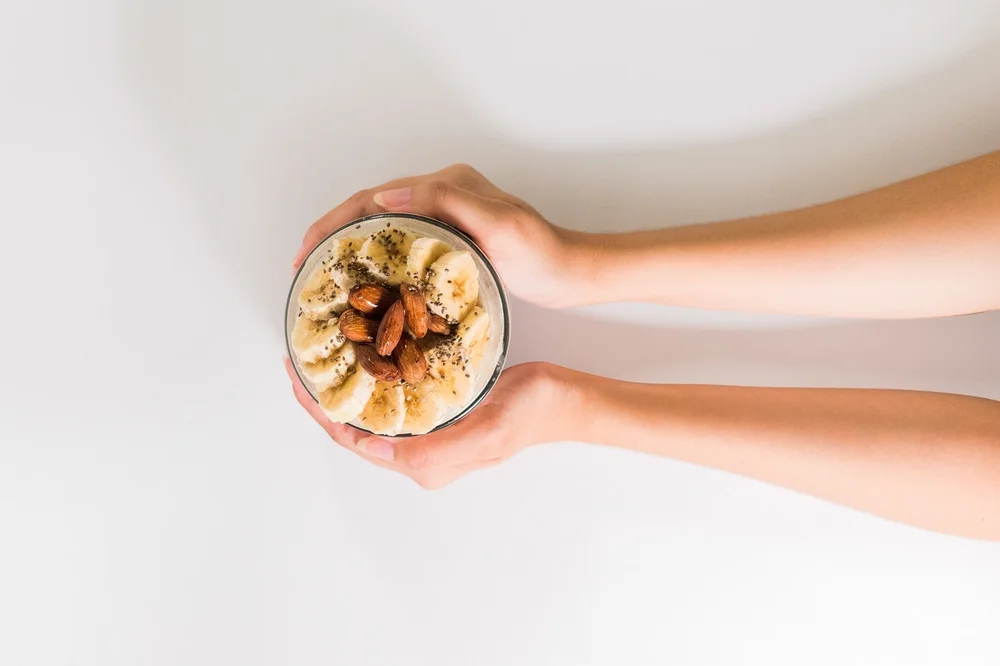What You Need to Know About USDA Organic and Non-GMO Foods
One way to protect your brain and body health is to be discerning about how the food you consume is cultivated.
Thankfully, there are two important labels that can tell you a lot about the health, safety, and environmental impact of a particular food product: USDA Organic and Non-GMO.
Here’s what you need to know about these labels, and why they matter.
What Does Organic Mean?
Unlike fluffy marketing terms like “all-natural,” “sustainable,” or “locally grown,” the term “organic” is actually a legal one that carries some weight.
Products labeled as organic must meet the organic label requirements established by the USDA’s National Organic Program (NOP).
Certified organic foods and food ingredients are grown or raised on organic farms that meet rigorous requirements and are inspected by USDA-approved certifiers. Organic farms are then required to be inspected annually to ensure continued compliance.

Additionally, you may see the claim “100% Organic” or simply “Organic” featured on a food product’s front display panel. Only food products with 95% or more organic ingredients that have met the legal requirements for organic labeling can feature the organic claims on the front label and the USDA Organic seal.
The claim “Made With Organic ___” on a product label indicates the product has at least 70% organic ingredients. In cases with less than 70% organic ingredients, a product will use “organic” for the organic ingredient on the ingredient panel. For products using either of these organic claims, no USDA Organic seal is used.
Among the many criteria to be met for organic certification, here are some of the requirements most pertinent to consumers.
For plant foods/ingredients:
- Must be grown without the use of pesticides, synthetic fertilizers, and genetically modified organisms (GMOs) for three years or more prior to harvesting.
- Farm must have a buffer zone surrounding the area to protect against chemical contamination.
- Farm must conserve and enhance biodiversity, care for soil health, minimize erosion, and use environmentally sound practices for managing fertility, weeds, diseases, and insects.
- No use of sewage sludge or irradiation.
- Must adhere to a strict list of permissible substances to safeguard crops, called the National List.
For animal-based foods/ingredients:
- Diet must use organically-grown feed (without animal byproducts) only and no synthetic hormones or antibiotics.
- Must be raised in clean, safe living conditions accommodating natural animal behaviors (like the ability to graze on pasture or have access to outdoor space).
- Must not be confined in such a way that prevents lying down, standing up, fully extending limbs, and moving about freely.
- No animal cloning.
Why Buy Organic?
Many consumers buy organic for health reasons and/or because it’s better for the environment.
Research shows that organic produce may be better for human health as it contains greater concentrations of important nutrients (such as antioxidants, omega-3s, polyphenols, etc.) and far less harmful pesticide residue than conventionally grown produce.
Organic farming is widely recognized for being more sustainable than conventional farming because it lacks harmful chemical pesticides and employs greater biodiversity, which means better soil quality and reduced pollution from synthetic fertilizer. Another consideration: conventionally grown livestock involves an added carbon footprint from imported feed that’s absent in organic production.
Non-GMO Labeling

About GMOs
GMOs are living organisms whose genetic material has been manipulated artificially in a lab via genetic engineering. This creates combinations of plant, animal, bacterial, and viral genes that aren’t found in nature or even through crossbreeding techniques.
In agriculture, GMOs have been artificially engineered to withstand the direct application of certain herbicides and/or to produce an insecticide. There’s also a new class of GMOs being used to develop other features artificially, such as resistance to browning in potatoes for greater consumer appeal, as well as to make new organisms.
Why GMOs Are Concerning
The Frankenstein-ish aspect of GMOs makes many consumers uncomfortable, especially since the long-term health consequences of consuming GMO foods is unknown at this time.
Some believe that the genetic-engineering process may cause unnatural alterations in a plant’s metabolic pathways or its own naturally occurring proteins, which may lead to the production of toxins or allergens in food. However, this hasn’t been proven.
While numerous research articles have pointed to GMO safety, the tentative conclusions in these studies contain various caveats, such as “no overt consequences” and “no effects on human health have been shown,” which suggest that GMO safety hasn’t been proven.
Also worth considering is that more than 80 percent of all GMOs grown around the globe are genetically modified for herbicide tolerance, resulting in greater herbicide use. The toxic herbicide Roundup has increased dramatically since GMOs were introduced. GMO crops have additionally played a role in creating “superweeds” and “superbugs,” which require potent toxic poisons to be controlled.
There are political/ethical issues too. Giant biotech companies have been able to obtain patents on GMO seeds, which gives them absolute control over their product. Critics say that farmers face severe financial hardships due to having to repurchase GMO-patented seeds annually.
Perhaps most unsettling of all, once GMO seeds are released into the environment, they can’t be recalled.
GMO Foods

GMOs are commonly found in sugars, syrups, oils, emulsifiers, and other additives. About 80% of processed foods contain GMOs, according to some estimates. Additionally, corn and soy make up the bulk of the feed consumed by cattle, hogs, and poultry, and alfalfa is a major component in the diet of dairy cows.
Starting earlier this year, some GMO foods were required by the USDA to disclose on labeling that they’re “bioengineered.” In its infancy, USDA bioengineered labeling doesn’t apply to all GMO foods, and thus the Non-GMO Project Verified seal is more informative for those wanting to avoid GMOs.
Non-GMO: What Does It mean?
Non-GMO Project Verified products comply with the Non-GMO Project Standards, which essentially means they’re produced without genetic engineering or genetically engineered ingredients.
The standards include stringent provisions for testing, traceability, and segregation. The Non-GMO Project tests products and spot checks at different points in the supply chain along with yearly inspections for ongoing compliance.
Organic vs. Non-GMO
You may be wondering why non-GMO verification is needed when organic certification already doesn’t allow GMOs.
The answer is that non-GMO verification builds on the work of organic certification by adding measures of ongoing testing of high-risk ingredients and important control points. It adds an extra layer of vetting and protection for GMO avoidance.
Read the Label
The next time you go shopping, you may want to look for the USDA Organic and Non-GMO Project Verified seals.
In addition to helping safeguard your health and protect the environment, buying certified foods supports the existence of more organic and non-GMO foods.
And don’t forget that these certifications are used in supplements, personal care products, and even textiles that use organic or non-GMO ingredients.
At BrainMD, we’re dedicated to providing the highest purity nutrients and standardized herbal ingredients to support your energy, focus and overall well-being. For more information about our full list of supplements, please visit us at BrainMD.
- Here Are Some of the Best Tension Release Exercises to Help You Feel Your Best! - April 17, 2024
- Foodscaping: How to Grow Healthy Foods In Your Own Garden! - April 12, 2024
- Eat Your Fruits and Veggies (Don’t Drink Them) - March 29, 2024



